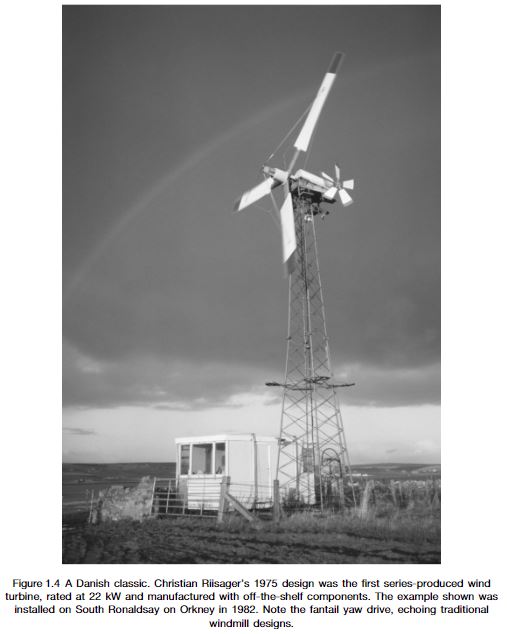

On 8 November 1977, President Jimmy Carter made a televised address to the US nation on the subject of energy. There was a crisis. Geopolitical tensions had resulted in an embargo on oil exports from the Middle East, on whose output much of the industrial world then relied. The ‘energy crisis’ of the 1970s was felt worldwide and similar policies were implemented in many countries; but it was in America, where the use of oil was most prevalent, that the pace of deployment of renewables was set. Within a few years the first large-scale windfarms started to appear in California and soon there were thousands of wind turbines feeding into public electricity networks.
The early machines were relatively small, and appeared in a variety of designs and configurations with two, three, and even four blades. Many were from Denmark, which country has played a pre-eminent role in the history of wind power. Among the first turbines to achieve series production was the 1975 design of Danish carpenter Christian Riisager, rated at 22 kW. Since then the dimensions of new wind turbines have increased by an average of around 7% per year, with corresponding power increase of 16% per annum. Today’s offshore wind turbines are 20 times larger, and 500 times as powerful, as Riisager’s. The development and scaling up of large wind turbines is a technological success story with few modern parallels.

Colin Anderson’s new textbook, Wind Turbines, seeks to bridge the gap between those who are well versed in the technology of wind turbines, and that of the lay reader who seeks to learn more about this renewable energy resource. Here, Anderson shares his interesting insights, found as he was writing this book.
This textbook is designed for the undergraduate reader, as well as professionals that are new to the field of wind energy, or those seeking information outside of their own specialism. Resources include illustrations, line drawings, photographs and graphical data sets, as well as chapter exercises based on the real-life experiences of the author (one or two of which, the author confesses, stumped him at the time!)
Wind Turbines: Theory and Practice is out now. Request inspection copies of the book, or purchase for your own reading, here: www.cambridge.org/windturbines
Latest Comments
Have your say!